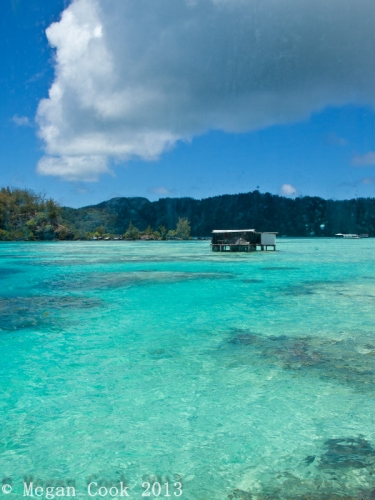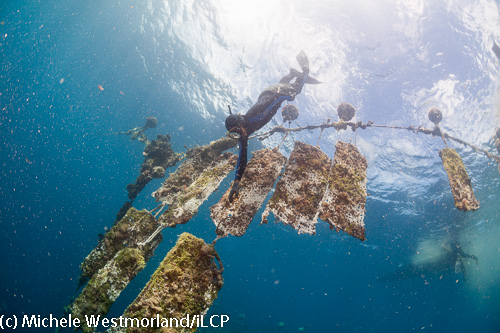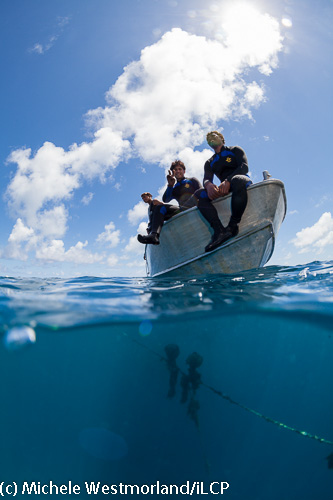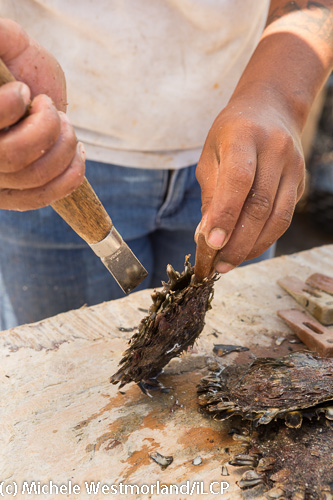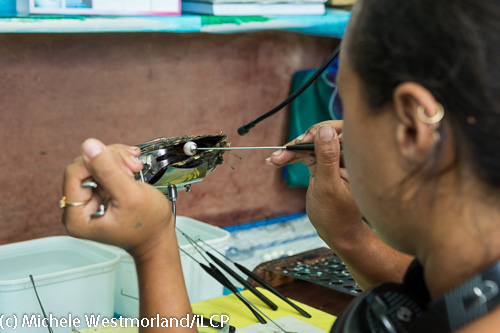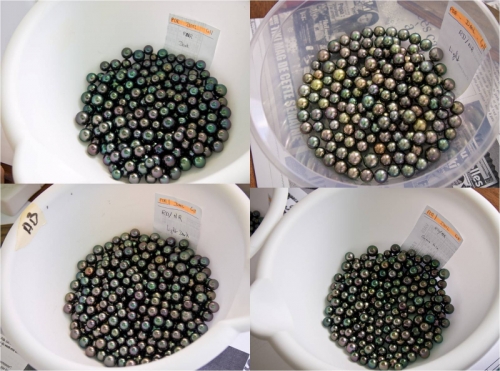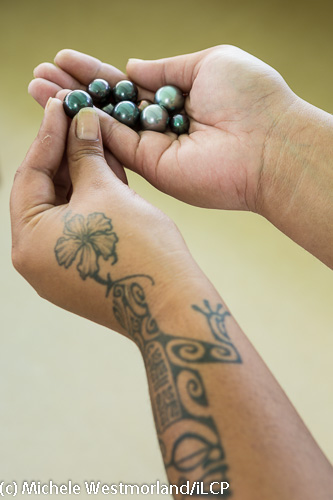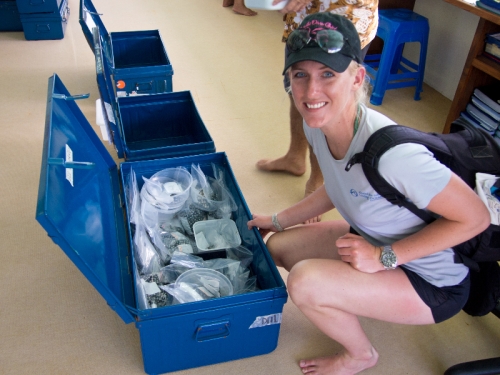On mission with Khaled bin Sultan Living Oceans Foundation and the International League of Conservation Photographers representing iLCP, photographer Michele Westmorland and I had the unique opportunity to shoot the turquoise waters where Tahiti’s famous black pearls are grown.
Pearls come in a rainbow of colors, but Gambier has the reputation for the finest pearls in French Polynesia and a distinct blue-green shade produced nowhere else in the world.
One of the Tahitian free divers retrieving an oyster filled screen.
It was a vigorous start to the morning with Dominique Devaux, the head manager for GIE POE O RIKITEA teaching us about the pearl farm industry. Starting with the freedivers amid the labyrinth of pearl lines to pull in oyster baskets, it was an amazing experience photographing the task – underwater. After years hanging in the water column, filter feeding on the plankton, and secreting a shiny compound called nacre, the pearls inside these bivalves were ready to be harvested.
A delighted group of pearl free divers. Amazing young men.
Flashback to oysters’ young lives: A spat, at one year old (science’s word for oyster baby) is ready to be seeded. The shell is pried open with a special wooden wedge peg in order to reach inside for graphing. The oyster is alive (and hopefully will stay that way) so opening the shell as little as possible and swift skillful handling are essential.
Quick and gentle opening of the oyster is essential.
A technician slides a small square of mantle tissue, muscle from a donor oyster with great color, and a small nodule (called a nucleus) into the oyster body. You could easily hire these Tahitian women in any dentist office across America after seeing how precisely they move big sharp metal tools in tiny places!
A technician implants the nucleus that will be the base for the pearl.
Oysters plop back into the water for the waiting game. It will take 45 days before managers will know if the oyster accepted the graph and another year or two before the pearl is ready for harvest. Graphing is a highly developed skill so technicians label their batches of work and are evaluated individually on how many quality pearls are produced each cycle.
Pearls are divided by size, color, and shape before being osld at auction around the planet. Dark, rich colors command the highest price. Flattened pearls, called keshi, grow when an oyster rejects its impanted nucleus but still has the donor tissue inside its body.
In the wild only about 1 in 2000 oysters are growing a pearl inside. Pearl farming has upped the odds and satisfied the global market. Working as a pearl technician is a college-trainable position and farms are a backbone to the Tahitian economy particularly in remote island chains like Gambier. Without pesticides, antibiotics, fish-food spillover or heavy nutrient influx, pearl farming is a very low impact aquaculture practice. Culturally the black pearl is an icon of French Polynesia and an ocean fashion statement you can wear proudly as a symbol of healthy ocean stewardship on a homegrown level.
The result of an oyster’s life on the farm held by one of the lovely technicians. Beautiful tattoo!
Just remember to thank the whole team of oysters who chipped in on your layered strands, as an oyster will only produce 1-3 pearls in its lifetime!
What girl doesn’t love pearls delivered by the trunkful?
